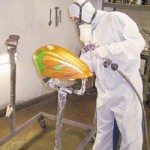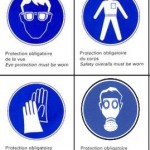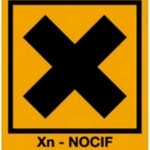 The most beautiful and resistant finishes we can experience are with automotive paints, however these latter often contain harmful organic solvents. StardustColors is very concerned about the safety of users (professionnals or amateurs) of its products, by making sure that they have a deep knowledge of harm associated to products use and by providing them with all advices for proper use of paints.
The most beautiful and resistant finishes we can experience are with automotive paints, however these latter often contain harmful organic solvents. StardustColors is very concerned about the safety of users (professionnals or amateurs) of its products, by making sure that they have a deep knowledge of harm associated to products use and by providing them with all advices for proper use of paints.
Painters often have the regrettable tendency to overlook risks, out of habit and for time savings:
-Cleaning tools with solvents with bare hands
-Spraying without wearing suitable respiratory equipment
By trying to gain a few seconds, for example exemption from wearing protective gloves or mask with filter, exposure to this invisible danger adds up day after day and can cause extreme damage many years after.
There are simple, quick precautions to take to stay safe!
Protect yourself
Routes of entry for solvents into the human body and special care to ensure safe handling or spraying:
-Eyes: eyes are easily penetrated by organic solvent vapours – Wear protective goggles. Full face respiratory masks will also do.
-Respiratory airways:
A basic rule of painting with solvents, if not carried out in spray booth, is to do it in an adequated ventilated place. Always wear a cartridge mask respirator, type A. Respirator cartridges must be changed regularly and as soon as you smell solvent.
Solvent based paint should not be stored in living quarters but kept in a ventilated room or equipped with air extraction system, out of children and animals’ reach.
During sanding breathing of any dust should be absolutely avoided, put on a dust mask specially designed for thin particles and with a perfect airtight fit !
-Skin: solvents easily and quickly penetrate the skin and pass into the blood stream
Always wear protective gloves and clothing. For hand washing, never use thinner but prefer 95% alcohol, which is non-toxic and a very good solvent.
Inform yourself
Solvent Specific risks and exposure prevention
 Some components of automotive solvent based paints are very toxic, such as xylene and toluene (commonly used in paints and tints) or such as ethyl acetate (often present in thinners).
Some components of automotive solvent based paints are very toxic, such as xylene and toluene (commonly used in paints and tints) or such as ethyl acetate (often present in thinners).
Isocyanates (contained in top coats and lacquers with hardener) are among the most hazardous substances in paint manufacturing, with lead chromate (a toxic component in yellow, orange and red pigments, and that is well-known for causing degenerative disease of the brain such as saturnism). These products are for professionals only.
The safe use of these products requires some particular precautions. To that end, safety instructions given on the cans must always be read and followed thoroughly.
If needed, we can also provide safety instructions sheets on request.
The substances contained in these products and their effects are fairly well known. However, little is known about the combined effects of these components.
Their immediate effects (skin and eyes irritation) are of little importance. Nevertheless their lifetime cumulative exposure have long tem adverse effects: toxic substances have the capacity to be permanently absorbed by the fatty tissue (fat, bone marrow, brain, cell) and can favour over the years cell mutation.
These hazardous agents also affect the organs of the body that filter them from the blood circulation (kidneys, liver, lungs, bladder…) and damage them. Solvents can have negative effects on the reproductive system.



































































Leave a Reply